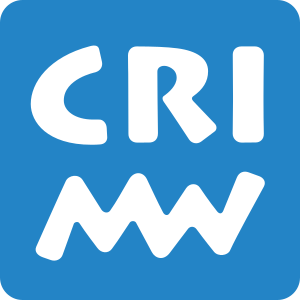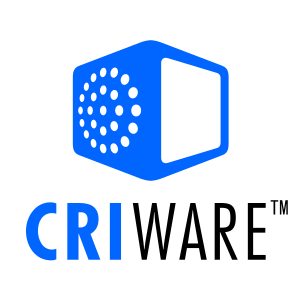Difference between revisions of "CSK Research Institute"
From Sega Retro
| Line 79: | Line 79: | ||
* ''[[TNN Motorsports Hardcore Heat]]'' (1999) | * ''[[TNN Motorsports Hardcore Heat]]'' (1999) | ||
* ''[[Cyber Troopers Virtual-On: Oratorio Tangram]]'' (1999) | * ''[[Cyber Troopers Virtual-On: Oratorio Tangram]]'' (1999) | ||
| + | *''[[Aero Dancing Todoroki Taichou no Himitsu Disc]]'' (2000) | ||
* ''[[AeroWings 2: Air Strike]]'' (2000) | * ''[[AeroWings 2: Air Strike]]'' (2000) | ||
* ''[[Surf Rocket Racers]]'' (2000) | * ''[[Surf Rocket Racers]]'' (2000) | ||
Revision as of 07:09, 8 April 2014
CRI Middleware Co. Ltd., formerly known as CSK Research Institute Corp., was set up to function as a research institute for the CSK group in 1988, whose primary holding was Sega. That year, the company developed Japan's first CD-ROM software: After Burner for the Fujitsu FM Towns console. Using its skills gained in CD-ROM technology, in 1993 the institute took part in the development of the Sega Saturn. CRI developed the Saturn's BIOS file system, development tools and supplied technical support for the system. In 1996, CRI Sofdec (formerly CRI MPEG Sofdec) and CRI ADX are developed. Apart from doing research into new media and formats and developing support tools for the software industry (mainly Sega and its third parties), it did also do some games development itself for the Sega Mega Drive, Mega CD, Sega 32X, Sega Saturn and Sega Dreamcast.
On September 30, 1999, CSK sold its 100% interest in CSK Research Institute Corp. by Sega to Isao Okawa for $853 million. The sales price was based on an appraisal performed by a third party. When Sega was splitting of its divisions into separate companies in 2000, CRI merged with the AM2 division. As part of the deal, the merged company gained the rights to Shenmue series.
In 2001, Sega turns to multi-platform development. As a result, when the game developers move to Sega AM2, the CRI was rebranded as the middleware developer CRI Middleware Co. Ltd. Their customers since this move have included high-profile clients such as Microsoft, Electronic Arts, Nintendo, Capcom, Konami, Namco Bandai Games, Atari Infogrames, Sony Computer Entertainment and Square Enix.
Contents
Products and services
These products and services are now offered by CRI under the collective name of "CRIWARE".
ADX
ADX is a streamed audio format which allows for multiple audio streams, seamless looping and continuous playback (allowing two or more files to be crossfaded or played in sequence) with low, predictable CPU usage. The format uses the ADPCM framework. It is now known as CRI ADX.
Sofdec
Sofdec is a streamed video format supporting up to 24bit color which includes multistreaming and seamless playback with a frame rate of up to 60 frames per second. It is essentially a repackaging of MPEG-1/MPEG-2 video with CRI's proprietary ADX Codec for audio playback. It is now known as CRI Sofdec.
Clipper
Clipper is an automated lip-syncing program which analyzes waveforms and outputs an appropriate lip pattern into a text file, for later substitution into the facial animations of the (in-game) speaker. It is now known as CRI Clipper.
ROFS
ROFS is a file management system for handling a virtual disc image, an extension of the CD-ROM standard. It has no limitations on file name format, or number of directories or files, and has been designed with compatibility with ADX and Sofdec in mind. It is now known as CRI ROFS.
Sound Factory
Sound Factory is a GUI-based video game audio tool for effective sound design without input from programmers. It has support for the previewing and playback of generated audio. It is now known as CRI Sound Factory.
Movie Encode
Movie Encode is a video encoding service by which CRI generates Sofdec or MPEG files from other media. For a fee (designated by the length of the file to be encoded), files are converted to the desired format with the quality specified by the client. It is now known as CRI Movie Encode.
Softography
- This list is incomplete; please help expand it.
Mega Drive
- Galaxy Force II (1991)
- Dyna Brothers (1992)
- Mega lo Mania (JP publishing; 1992)
- Speedball 2: Brutal Deluxe (JP publishing; 1992)
- Dyna Brothers 2 (1993)
- Possible:
- Game no Kanzume Otokuyou (menu code; 199x)
FM Towns
- After Burner (19xx)
- Turbo OutRun (1989)
- Galaxy Force II (1990)
- Last Survivor (1990)
- After Burner III (1992)
Mega CD
- After Burner III (1992)
- Might and Magic III: Isles of Terra (1993)
- Wing Commander (1993)
Sega 32X
- Zaxxon's Motherbase 2000 (1995)
Game Gear
- World Derby (1994)
- Puzzle & Action: Tant-R (1994)
Saturn
- 2do Arukotoha Sand-R (1996)
- Cyber Troopers Virtual-On (1996)
- Kunoichi Torimonochou (1998)
- Kidou Senshi Gundam: Giren no Yabou (1998)
Dreamcast
- AeroWings (1999)
- TNN Motorsports Hardcore Heat (1999)
- Cyber Troopers Virtual-On: Oratorio Tangram (1999)
- Aero Dancing Todoroki Taichou no Himitsu Disc (2000)
- AeroWings 2: Air Strike (2000)
- Surf Rocket Racers (2000)
- F355 Challenge (2000)
- 18 Wheeler: American Pro Trucker (2000)
- Fighting Vipers 2 (2001)
- Outtrigger (2001)
NAOMI
- WaveRunner GP (2001)
External Links
| Timeline of Sega of Japan research and development divisions |
|---|
|
83
84
85
86
87
88
89
90
91
92
93
94
95
96
97
98
99
00
01
02
03
04
05
06
07
08
09
10
11
12
13
14
15
16
17
18
19
20
21
22
|

